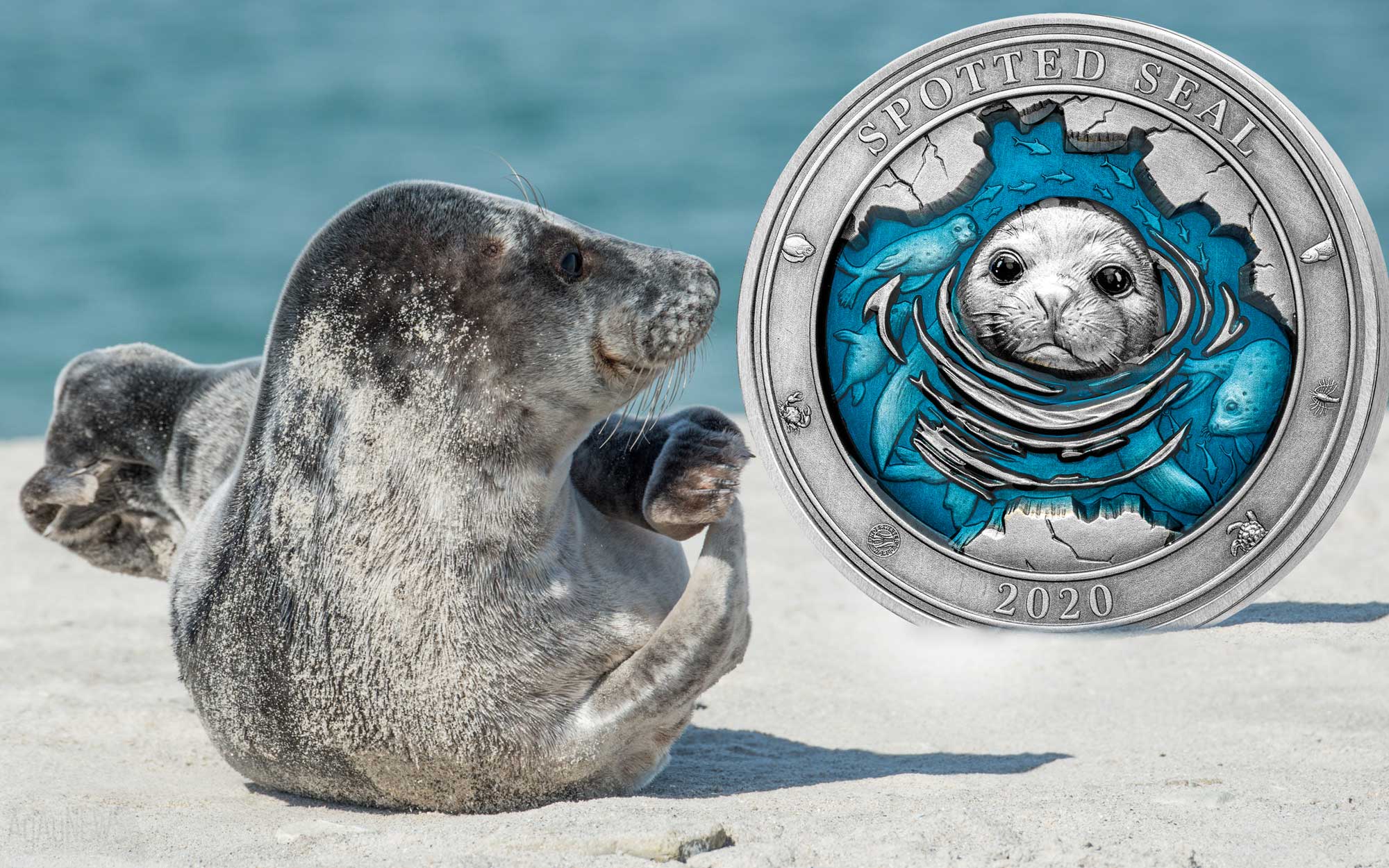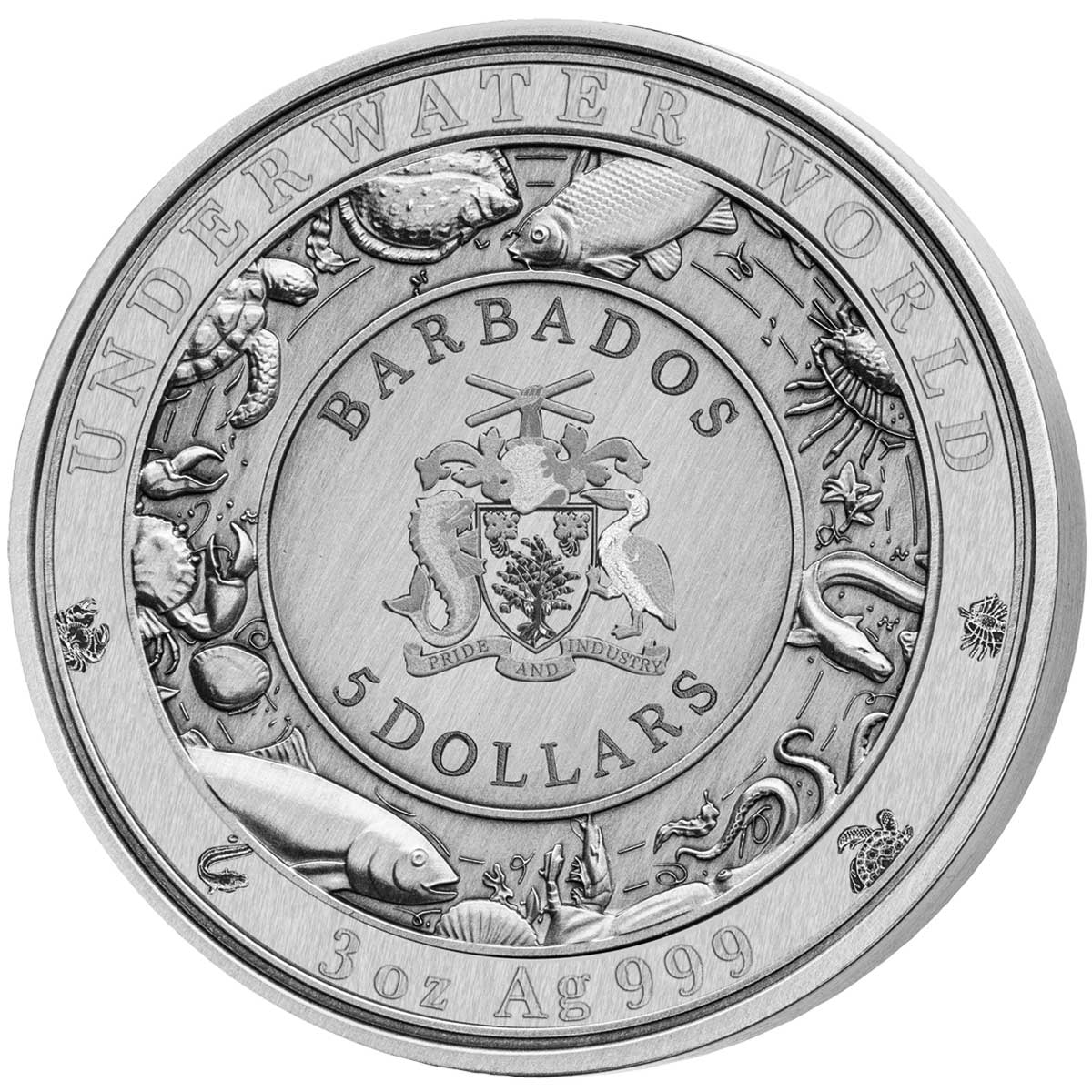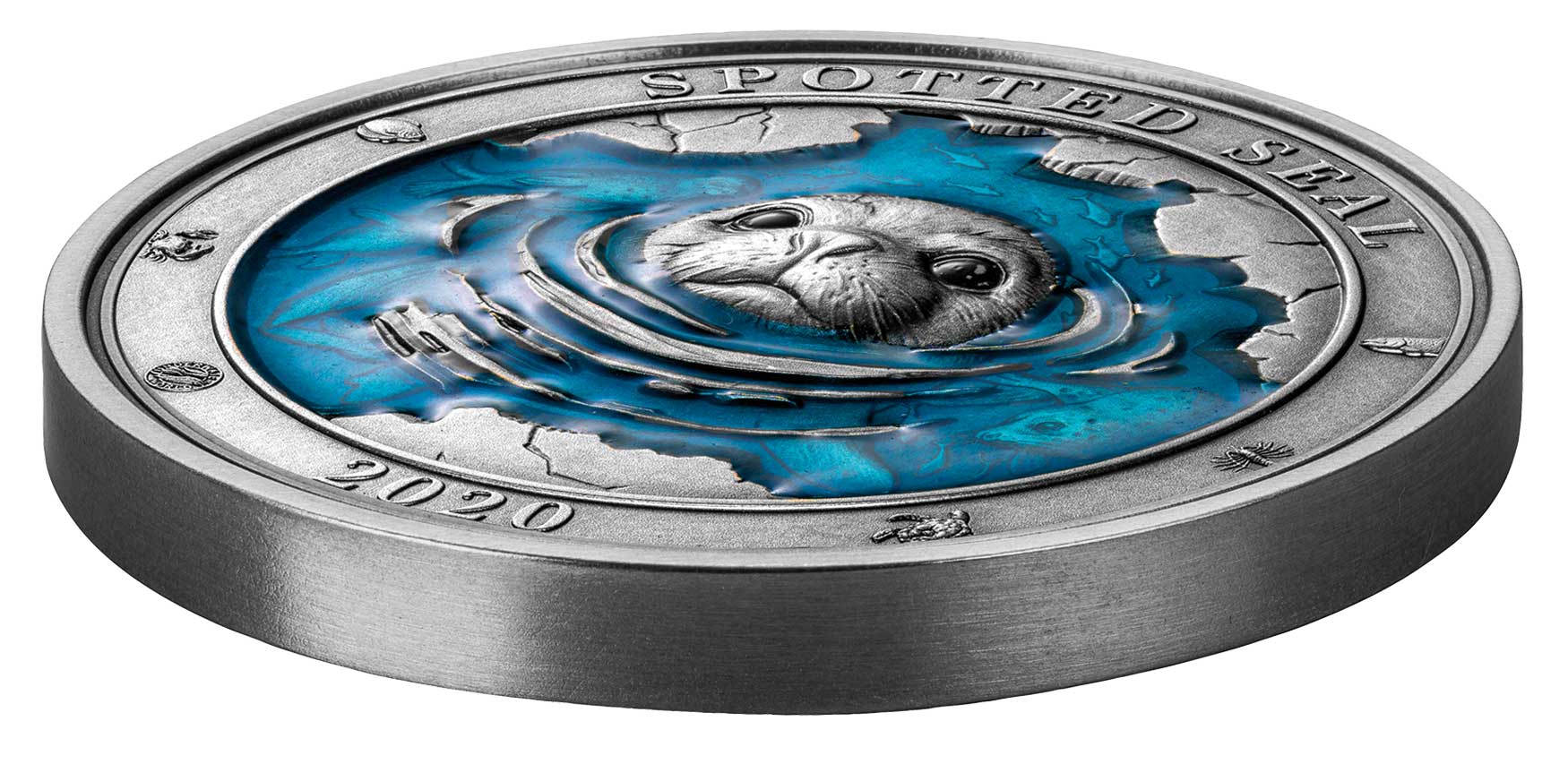ANA 2019: MDM’s pretty Underwater World series gets its fifth member with the inquisitive Spotted Seal
Now five coins in, MDM’s quirky Underwater Worlds series of 3oz antiqued silver coin has always stood out with its use of a translucent blue resin to depict the surface of the sea. A variety of reptiles, fish and mammals have all been portrayed poking their heads though the surface of the ‘sea’ and for this fifth coin we’re back in mammal territory with the Spotted Seal.
These are pretty coins and they all follow a similar path. The common obverse is identical throughout (the date is on the reverse face), and the reverse faces have the same border with just a couple of inscription changes (date & title), so differentiation falls to the centre of one side. Fortunately, these are all pretty unique designs, and the Spotted Seal featured here is a charming piece incorporating faux ripples on the surface, and a pod of seals in the background under the translucent blue enamel infill. MDM definitely seem to be subtly refining the concept with each new issue.
Boxed, with a certificate of authenticity, the mintage for this 3oz silver coin is capped at 999 pieces and it should retail for around the €250 mark. A great addition to the series of which you can see a lot more in our Coin Series Profile of the range.
THE SPOTTED SEAL
The spotted seal (Phoca largha), is a member of the family Phocidae, and is considered a “true seal”. It inhabits ice floes and waters of the north Pacific Ocean and adjacent seas. It is primarily found along the continental shelf of the Beaufort, Chukchi, Bering and Okhotsk Seas and south to the northern Yellow Sea and it migrates south as far as northern Huanghai and the western Sea of Japan. It is also found in Alaska from the southeastern Bristol Bay to Demarcation Point during the ice-free seasons of summer and autumn when spotted seals mate and have pups. Smaller numbers are found in the Beaufort Sea. It is sometimes mistaken for the Harbour seal to which it is closely related and spotted seals and Harbour seals often mingle together in areas where their habitats overlap.
The reduction in arctic ice floes due to global warming led to concerns that the spotted seal was threatened with extinction. Studies were conducted on its population numbers, with the conclusion, as of October 15, 2009, that the spotted seal population in Alaskan waters is not currently to be listed as endangered by NOAA.
Spotted seals dive to depths up to 1,000 ft (300 m) while feeding on a variety of ocean prey. Juveniles eat primarily krill and small crustaceans while adults eat a variety of fish including herring, arctic cod, Pollock, and Capelin. They do not seem to vocalize a lot, although not much is known about their vocalizations. They appear to vocalize more while in molting groups. When approached in these groups, they make various sounds such as growls, barks, moans, and roars.
Based on satellite tracking conducted on Yellow Sea population, it was revealed that seals migrate more than 3,300 km.
| SPECIFICATION | |
| DENOMINATION | $5 Barbados |
| COMPOSITION | 0.999 silver |
| WEIGHT | 93.3 grams |
| DIMENSIONS | 50.0 mm |
| FINISH | Antique |
| MODIFICATIONS | Ultra high-relief, Blue enamel |
| MINTAGE | 999 |
| BOX / C.O.A. | Yes / Yes |






Leave A Comment